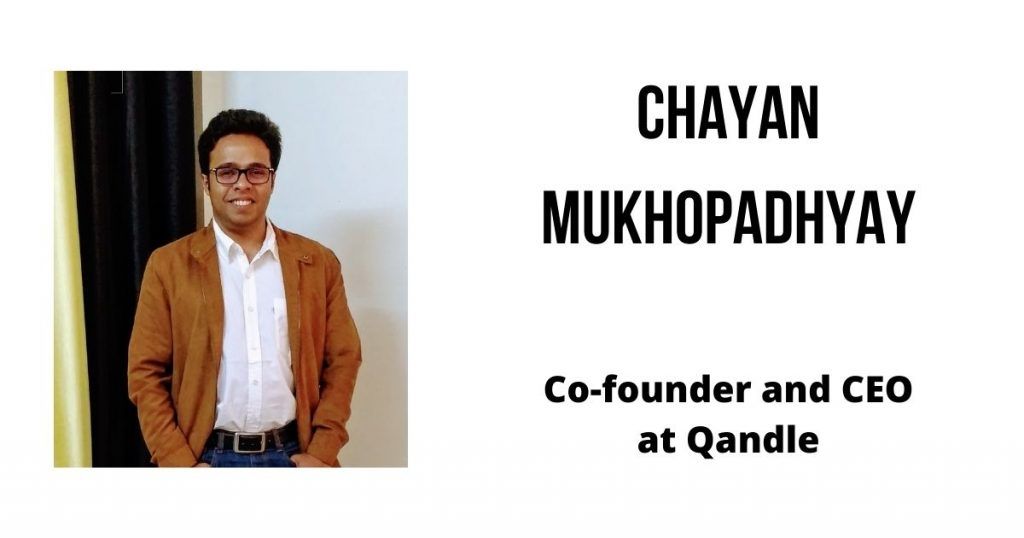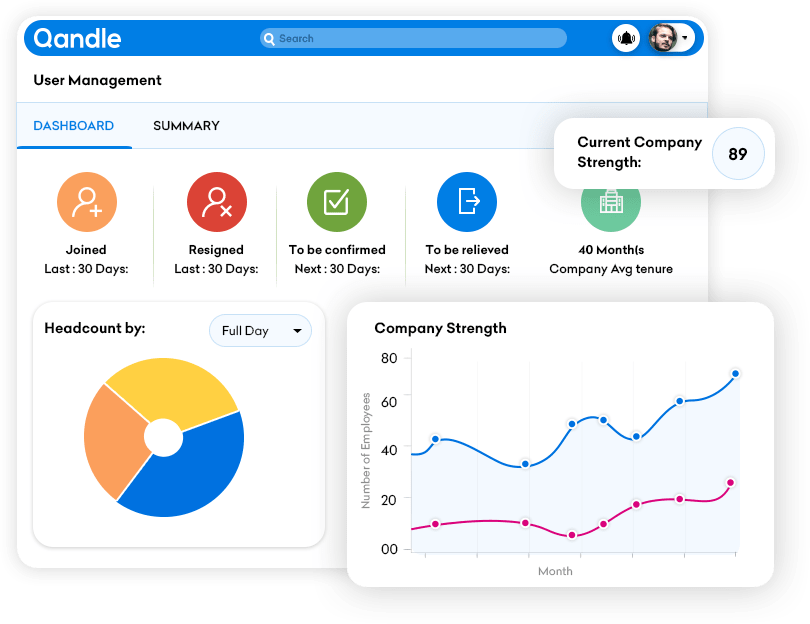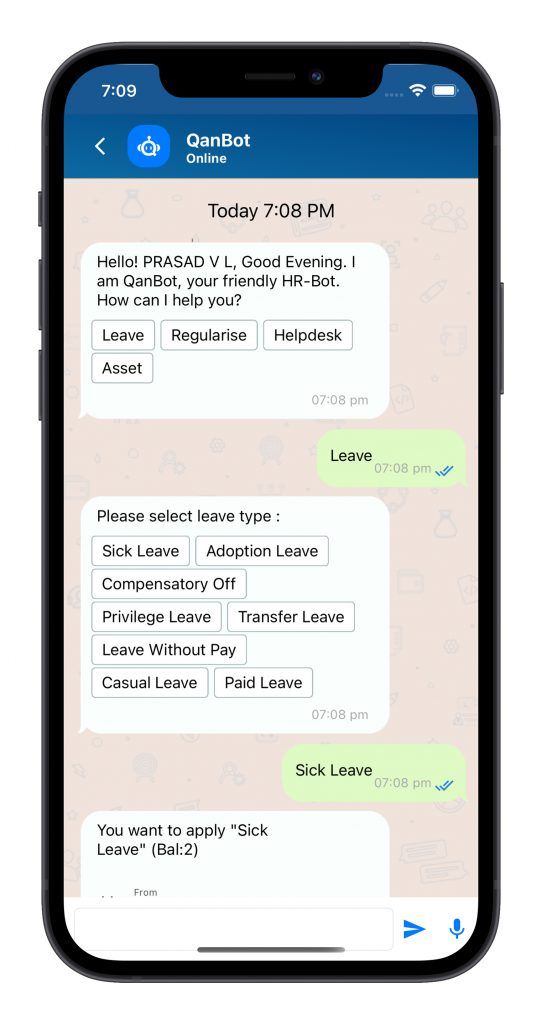For any organization, HR software is quite important. And yet, this space is continuing to evolve with established players constantly innovating and new-age companies also focusing on it in a different manner. In today’s SaaS Talks, we talk to Chayan Mukhopadhyyay, co-founder and CEO at Qandle, a comprehensive HR software. We talk to him about his journey, how Qandle has evolved over the years, and more.
PS: the interview has been edited for the sake of brevity.

Table of Contents
1) Before we begin talking about Qandle, can you share your journey into the world of SaaS?
I completed my MBA in 2011, and then I joined American Express as a campus placement. I worked there for two years. Then I joined Jabong when it was an upstart and not a lot of people had heard about it. I was there for two years.
At AMEX, they were using the most expensive HR tool available at the time. And yet, filing even a basic mobile reimbursement would take 35 to 40 minutes. In fact, there would be quarterly training on how to apply for leave, how to file for reimbursement, etc. This was the first thing that struck me as a little odd as to why do I need to be trained on how to apply for leaves. Also, the software was clunky and it’d keep on loading.
Contrast that to Jabong, where the situation was totally different. There were five to six different tools for different purposes – investments, reimbursements, leave and attendance, hiring people, etc. Similarly, performance feedback would happen on Excel sheets. What was even worse was that these tools didn’t speak to each other. Then there were cases, where the vendors for the software would change every six months. All this meant that there wasn’t a consolidated view. This would lead to cases like where one employee is on leave, but they have applied for transportation reimbursement / traveling on duty, and because the tools aren’t connected, you don’t know whether the person was on leave on that day or not.
With these experiences, I started my first company in 2015 termed Perkxx. So what we would do is we would go to restaurants, salons, and we’d get discounts. And these discounts would be applicable to employees of the partner organization. It’s akin to Groupon, but not for everyone – only the partner organizations. I was selling this to HR as they work towards employee benefits, etc.
All the HRs I talked to were also asking if I had comprehensive HR software. In fact, for this company as well, we had partnered with a couple of HRMS offerings, but we still got to hear the same concerns. So I had sold this first company, and I was now looking to solve this problem head-on. And that’s when we started Qandle. When I started, it was more about solving the HR problem, than launching a SaaS.
2) Could you tell us about how Qandle has evolved since its launch in 2016?
When we started Qandle, we were absolutely sure that we need a tech co-founder. We also realized that most of the players in the market are started by non-tech founders or those who have an HR background.
When I and my technical co-founder started, we discussed three non-negotiables for Qandle: 1) comprehensive HR tool that’s end-to-end, 2) configurable to adapt to the needs of organizations as well as employees, and 3) intuitive enough for users to know how to use it. It took us around 15 months to develop the product. We did not want to launch with only one or two modules. Instead of an MVP, we went to launch a full solution as the HR space has a ton of players.
After building the solution, our product roadmap is heavily influenced by our clients. In fact, this roadmap has been shared with our clients. This is something that sets us apart from the competition as the clients can see what we’re working on, and they can also vote on what features they want the most.
3) How many customers do you have now? And what kind of industries are using Qandle the most?

We have 400+ clients which are primarily based in India but there are global companies too. We’re industry agnostic as HR software is important in organizations of all shapes, sizes, and types. So our smallest client would have 30 to 35 employees, and the largest one would be 7,000 employees.
4) HR management software is a crowded category, so what sets you apart?
Globally, 70 percent of HRMS implementations fail. Even more surprising thing to me was that employees don’t take to it. What they feel is that the management doesn’t trust me or they want to keep a check on me.
What we’ve tried to do is to call ourselves the “smart HR for the modern workplace“. Our aim is to build better workplaces. And the way we’ve done it is that we’ve turned it around. Instead of putting the onus on the employees to fill or submit something, we show the employees the status of their requests, and so on. This makes employees feel that the tool is for them and the organization hears them. This has solved the adoption problem for us.
We also have user-friendly mobile apps. While a lot of the HR software offer mobile apps, they aren’t user-friendly. In our case, we’ve been mobile-first from day one and ensure that employees can do everything from the app.
With respect to feature development, we don’t build any feature if it’s not going to help the employees. We have gotten certain requests and I know that there are certain tools which do such things that aren’t ethical, but we don’t do it.
That’s why our target audience is also forward-looking companies. They care about the employee experience. They believe that employees are their first customers and they need to provide a great experience for them.
Lastly, we focus disproportionately on customer support. We have dedicated account managers for all our customers. Unlike most of the competition which will route you to the customer care call center, we ensure that we hear about the client’s issue and try to solve it.
5) Could you shed a light on Qandle’s marketing strategy?
We primarily focus on digital marketing. There are very few events that we have gone to. But the one strategy that works great for us is word of mouth. As you know in the world of SaaS, if you have a reference, it’s much easier to convert. We also list ourselves on software comparison sites like SaaSworthy.
6) How has the ongoing pandemic affected Qandle – both in terms of businesses and no of users?
There’s no denying that the pandemic has affected everyone. For cloud-based companies like Qandle, there’s a positive thing as well as a negative one. The former is that companies that were reluctant to move to the cloud, have opened their eyes to the fact that the software should be accessible anytime, anywhere. More traditional companies are moving to the cloud.

For the latter however, bigger organizations are holding off to make any decision with regards to the HR software. That said, the role of HR has become important during this period as they want to ensure that employees stay safe.
Overall, the net effect is negative considering all of us charge on a per employee per month basis. And because of this pandemic, even organizations have let people go or dropped their hiring plans. Both of these things affect our revenue.
7) Can you talk about your experience of building a global product out of India?
The primary challenge is that the markets are very different. In India, SaaS is still evolving and traditional on-prem software has as much as 80 to 85 percent market. But if you look at the west, then SaaS is the primary market. Because of this, India is a DIFM market (do it for me), where organizations want us to do the implementation for them. In comparison, the clients in the US like the DIY aspect.
So this was the biggest challenge or problem that we had to solve. Since we wanted to cater to the global audience as well, we created the software in such a manner that it’s DIY, but if needed, we can also configure it for our clients.
In terms of talent, I don’t think there were a lot of issues because I believe that India has really good tech and startup talent. Especially over the last 10 to 12 years, the talent has caught up. So that’s not a problem or a product out of India.
8) What’s next for Qandle? Any new features that you’re working on?
So we recently launched AI chatbot. Like I mentioned before, it’s an endeavor to provide a better experience for employees. So for all the general queries, you can chat with the chatbot to get the answers. And if needed, you can also raise a ticket for your problem. In fact, not just typing, the chatbot supports voice inputs as well.

Another thing that we recently launched was resume parsing. When candidates apply, they don’t have to enter all the details. If they just upload their CV, uh, we will automatically read the CV and take out their name, email, phone number, past experience, skills, etc. And then we can also recommend the relevant job to them.
Of course, we are working on a lot of new features, but we can’t divulge that info before launching them.
9) What are your favorite SaaS products out there?
Qandle is of course my favorite, but other than that, it’d be Google Workspace. Whether it’s Gmail, Google Sheets, and so on – basically everything you need to run your business.






